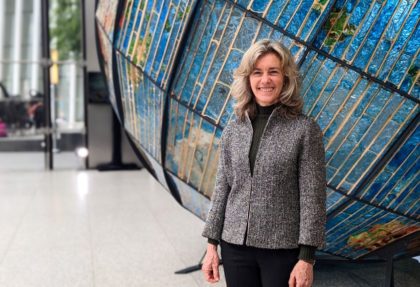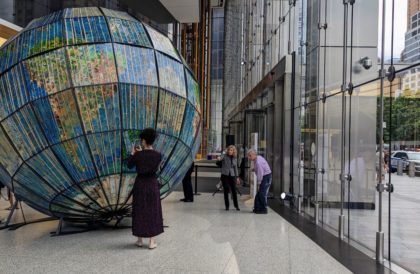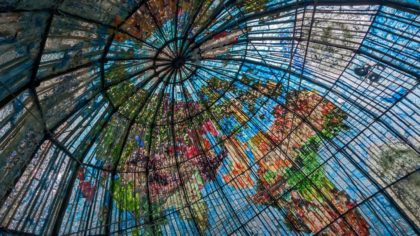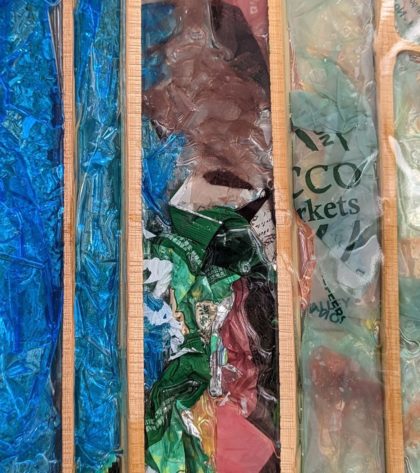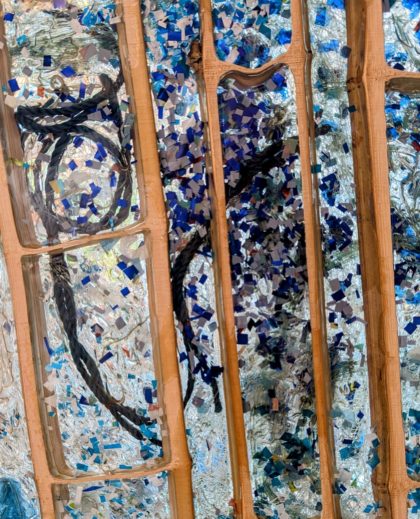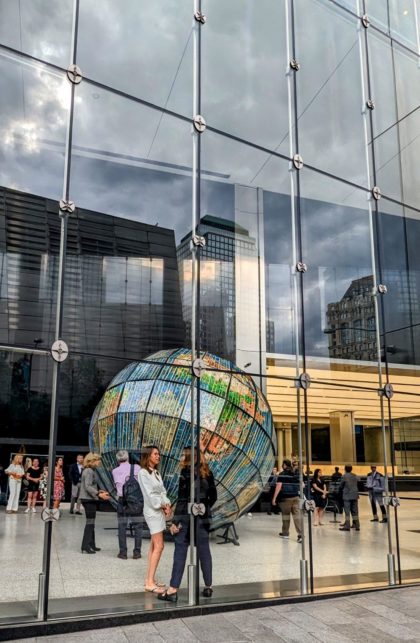Categories
Left column house ads
Art in Tribeca: Beverly Barkat’s ‘Earth Poetica’ at 3 WTC
July 5, 2023 Arts & Culture
Five years ago, Lisa Silverstein, Larry Silverstein’s daughter and the vice chair of Silverstein Properties, came to Israeli artist Beverly Barkat’s studio in Jerusalem to commission a piece for the lobby of 3 World Trade Center. At the time, Barkat had just seen a documentary about plastic pollution, watching kids picked through trash on a seashore, and thought, “How can this be what we are leaving our children?”
So she started to drill down on plastics, on the material itself, and worked the idea over and over again “until it solved itself,” she said at the sculpture’s opening last month. She would “paint” with plastic, embedding it in resin set between channels made by slicing columns of bamboo. The design would be a monumental globe with plastic waste gathered from all over the actual globe, shipped to her studio from conservationists on six continents by the boxful.
“I needed to connect with something going on here,” Barkat said. “We are suffocating ourselves. Look around — then you can see what part you play in this. It’s everywhere in our own homes.”
Over three years, she amassed tons of plastic waste, organizing and classifying each item – bottles, bags, lids and fishing nets – sorting them by color, form, hardness, strength and transparency. Using a soy resin, she developed a method to embed the plastic into a material that both resembles stained glass. The 180 panels echo the colors and landscapes of the Earth’s oceans and land masses, creating a globe 13 feet in diameter, with a steel structure mimicking longitude and latitude lines. The globe includes a small portal that allows viewers to see the innards of the globe, where the trash is sticking out of the resin.
“I went through stages where I felt that I was suffocating among all the plastic — I needed to leave the studio,” Barkat said. “But then I cast it and let it cure and suddenly I had a beautiful glistening panel, and I could come back to it.”
The piece is beautiful, and it’s not instantly recognizable as trash — in fact that’s the point. It’s only on closer inspection that you can see the remnants of packaging and products. You can spend a lot of time with it, since there’s something to examine at every angle.
“I had to create something mesmerizing,” Barkat said. “It’s a big jewel.”
Barkat (born in Johannesburg, 1966) works with clay, metal and glass, in addition to drawing and oil painting, and has shown across the world. “Earth Poetica” joins other public works on view at the World Trade Center, including the Jenny Holzer at 7 WTC, James Rosenquist at 3 WTC, Kozo Nishino and Tara Donovan at 4 WTC and the recently installed Frank Stella sculpture Jasper’s Split Star in front of 7 WTC. More on those soon.
Comment:
Subscribe
Subscribe to the TC Newsletter







